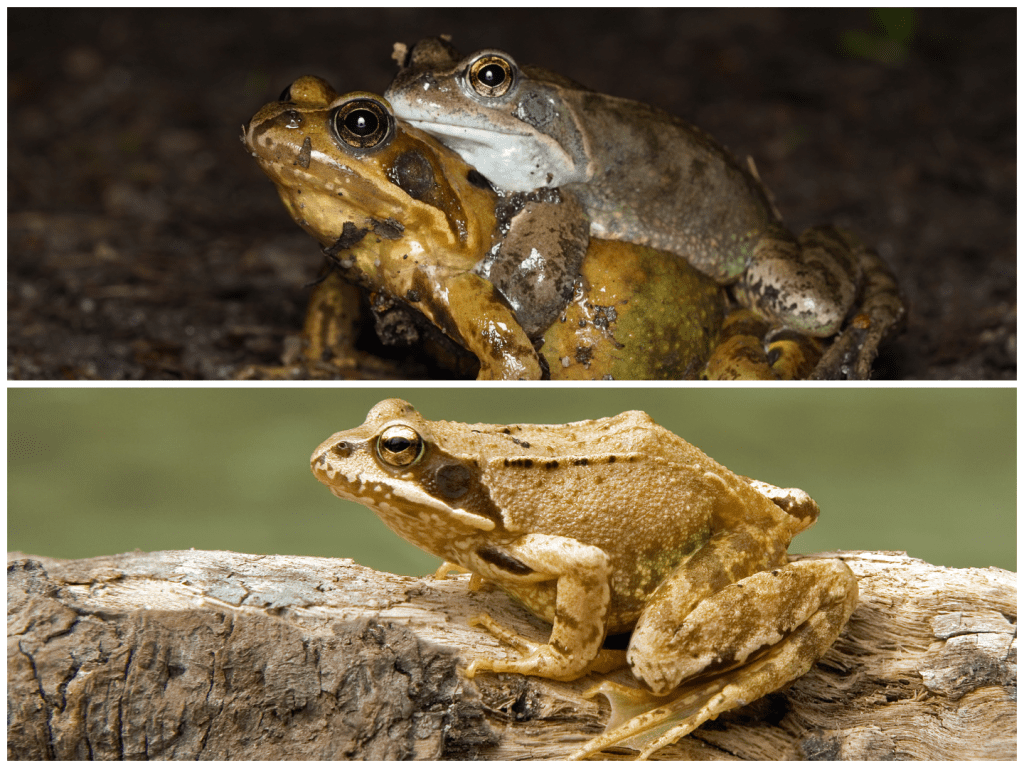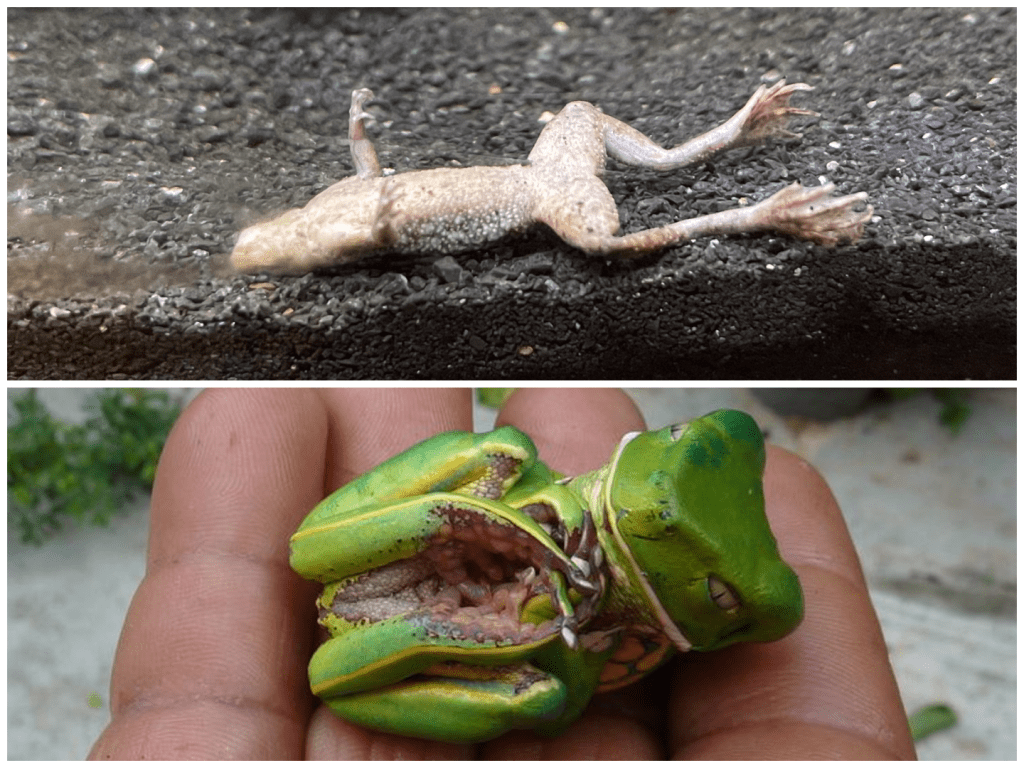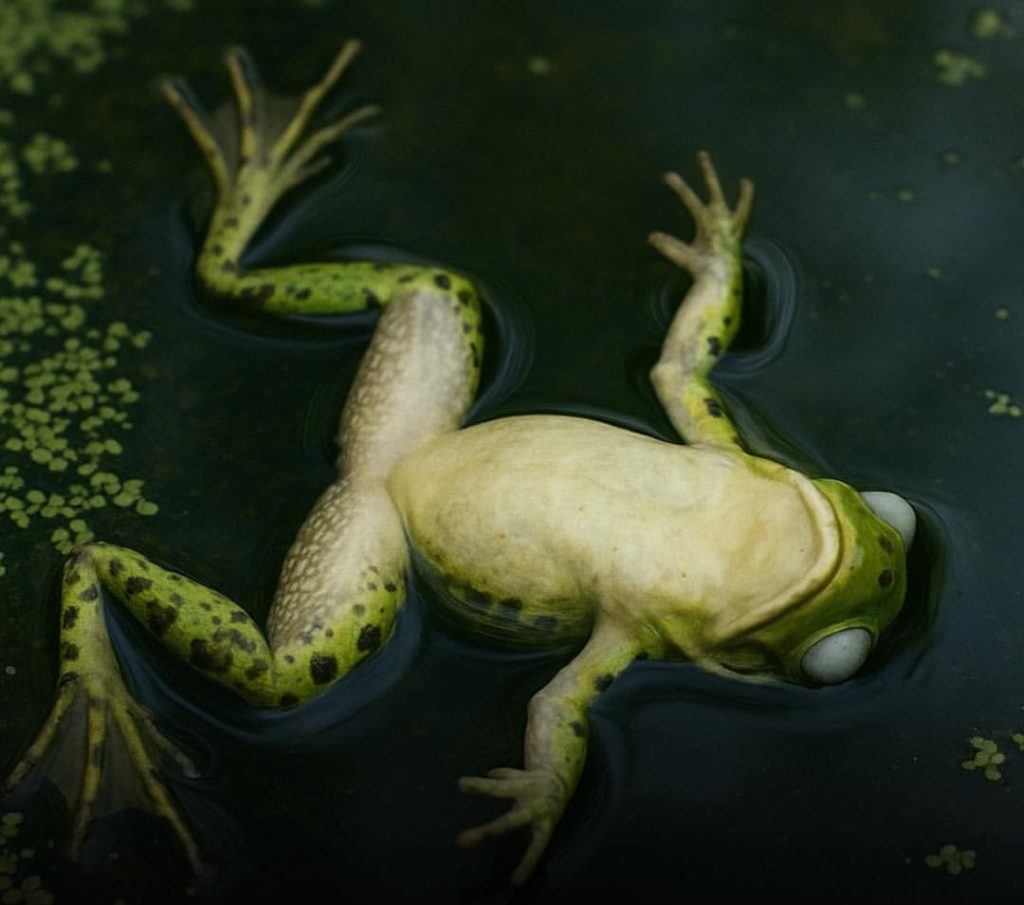European Female Frogs Literally ‘Play Dead’ to Escape Mating Frenzy—A Shocking Survival Strategy

I remember the first time I read about it, I was mid-scroll and nearly dropped my coffee. Female frogs—yes, the ones we picture quietly croaking by a pond—are playing dead during mating season to escape aggressive males. Not as a movie plot twist, but as real survival behavior recorded by scientists. The image of a tiny frog lying stiff, pretending to be stone cold dead so a suitor gives up—it felt unbelievable. But this isn’t fiction. It’s science.
During spring, European common frogs (Rana temporaria) gather in huge numbers in ponds for what’s called “explosive breeding.” Males swarm the few available females, clinging tightly to mate, sometimes forming “mating balls” — tangled masses of frogs struggling in the water. That can be dangerous. Females can drown under the weight of persistent suitors.
Scientists thought females were passive victims—until a team led by Dr. Carolin Dittrich and Dr. Mark‑Oliver Rödel from Berlin began recording behaviors closely. They put male frogs in tubs with two female frogs each, observing their reactions. Out of 54 females grasped by males, a remarkable 83% tried to escape by rotating their bodies. Nearly half—48%—used a clever trick: mimicking the male’s “release call,” grunting to fake being a male, hoping the male would loosen his grip. But the most astonishing behavior was tonic immobility—playing dead. When a male still wouldn’t let go, one-third of the females stiffened completely, legs and arms extended, motionless as if lifeless. In more than 25 cases, this tactic worked: the male released the female and she swam away.
Tonic immobility isn’t some fairy tale. It’s a well‑known anti‑predator strategy used by birds, mammals, even fish. But it had barely been documented during mating—only in a few spiders or dragonflies. In frogs, it turns out, it’s a last‑ditch move: if spinning and calling don’t get results, going limp just might. One video shows a female lying perfectly stiff for two minutes until the male, convinced she’s dead, lets go—and she swims free moments later.

Why this desperate behavior? Think of a mating ball gone wrong: multiple males squeezing one female for hours, sometimes days. That much stress can kill her. Females only breed once a season, so surviving matters. Smaller, younger females used all three tactics more often than bigger ones—they faced more stress, and more risk.
It’s not about being picky or “finding men unattractive,” as some social posts joked. No frog is judging a suitor’s looks. This behavior isn’t conscious matchmaking—it’s instinctive self‑preservation. They’re responding to coercion, not romance.
As I read further, it felt like a plot twist in nature’s script. Feminists might smile at the idea of frogs rebelling, but this is nature—raw, survival‑driven, primal. Female frogs are not helpless—they rotate, call, and play dead. It’s a reminder that in science, humble creatures often show us what matters. We see resilience in the smallest beings.
This sparked a wave of coverage—The Guardian captured it best: “These frogs aren’t helpless.” ScienceAlert echoed it: “Female frogs fake their own deaths as a unique mating strategy.” ABC News captioned: “Female frogs fake their own death to escape unwanted male attention.” It hit a nerve everywhere—this is more than cute or bizarre. It’s feminist biology. Female frogs saying “no” to sexual coercion—and surviving.

Beyond frogs, tonic immobility stretches across nature. Opossums feign death, snakes go limp, tarantulas freeze. These behaviors show that pretending to die can be the smartest way to live. And in frogs, it’s not about predators—it’s about dodging abusive, deadly mating.
So what does that mean for us? Nature’s stories often reflect ours. Whether it’s a frog slipping from a male’s grip, or a person reclaiming space, the underlying message is one of agency. Animals are more complex than we give them credit for. Female frogs aren’t just passive participants—they’re fighters in their own quiet way.
Sometimes, sharing this kind of story matters more than just the fun fact. It flips a narrative. Instead of saying, “Look how weird frogs are,” it says, “Look how survival shows strength, whether you’re human or amphibian.” It reminds us that power doesn’t always roar. Sometimes it’s the stillness of someone pretending death so they can live on their own terms.
So next time you see a frog by a pond, remember: that tiny croak might come from someone with stories to tell—stories of struggle, escape, and survival. And if you ever come across videos of frogs lying still during mating, you’ll know there’s more beneath that motionlessness.
Because sometimes, life isn’t about fighting to the end. It’s about knowing when to stand strong—and when to simply stay still, wait it out, and swim free again.


